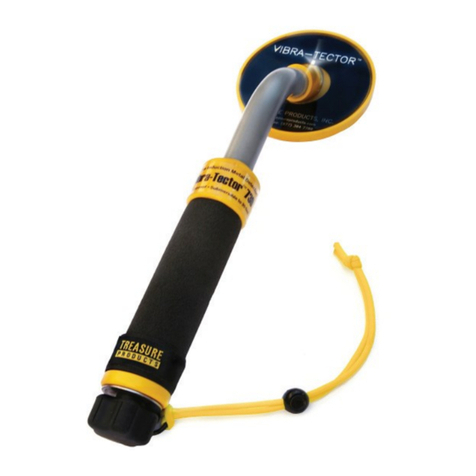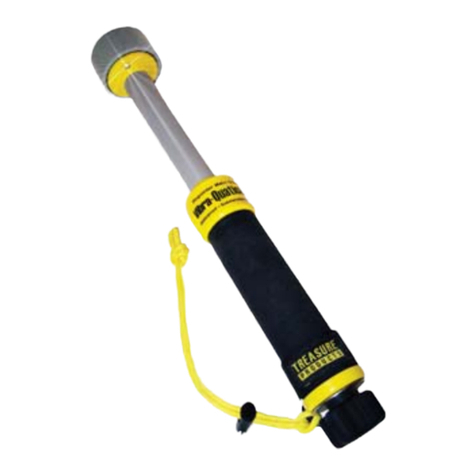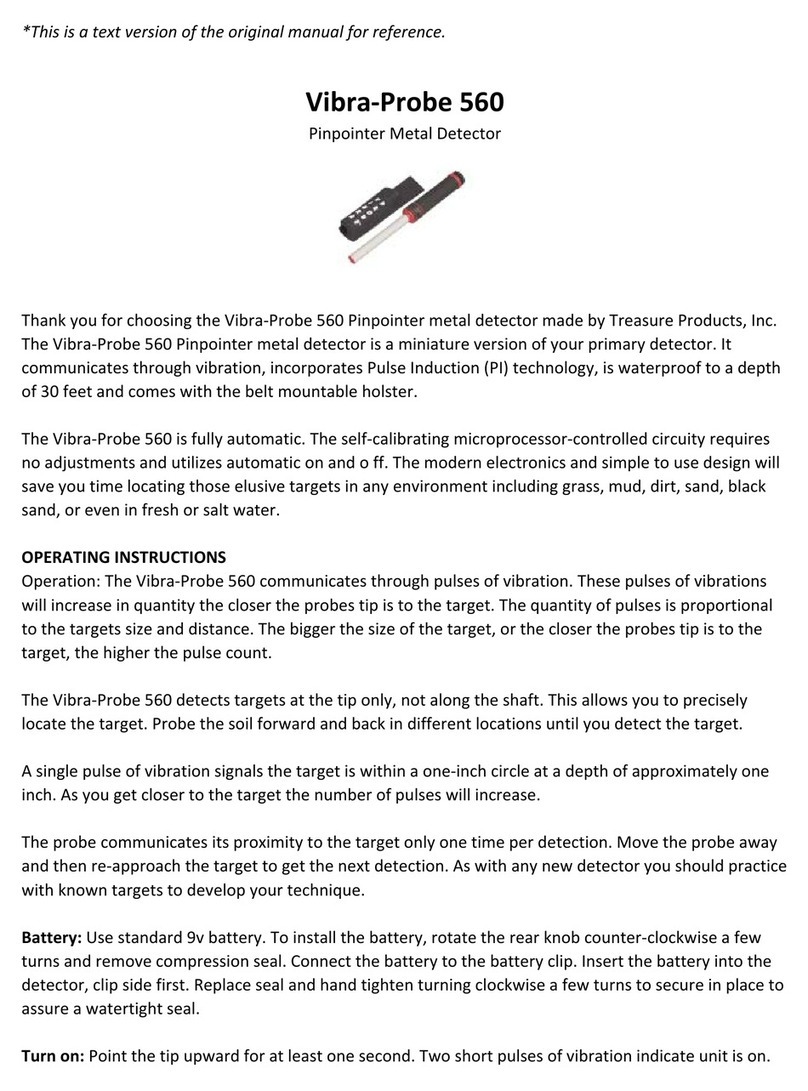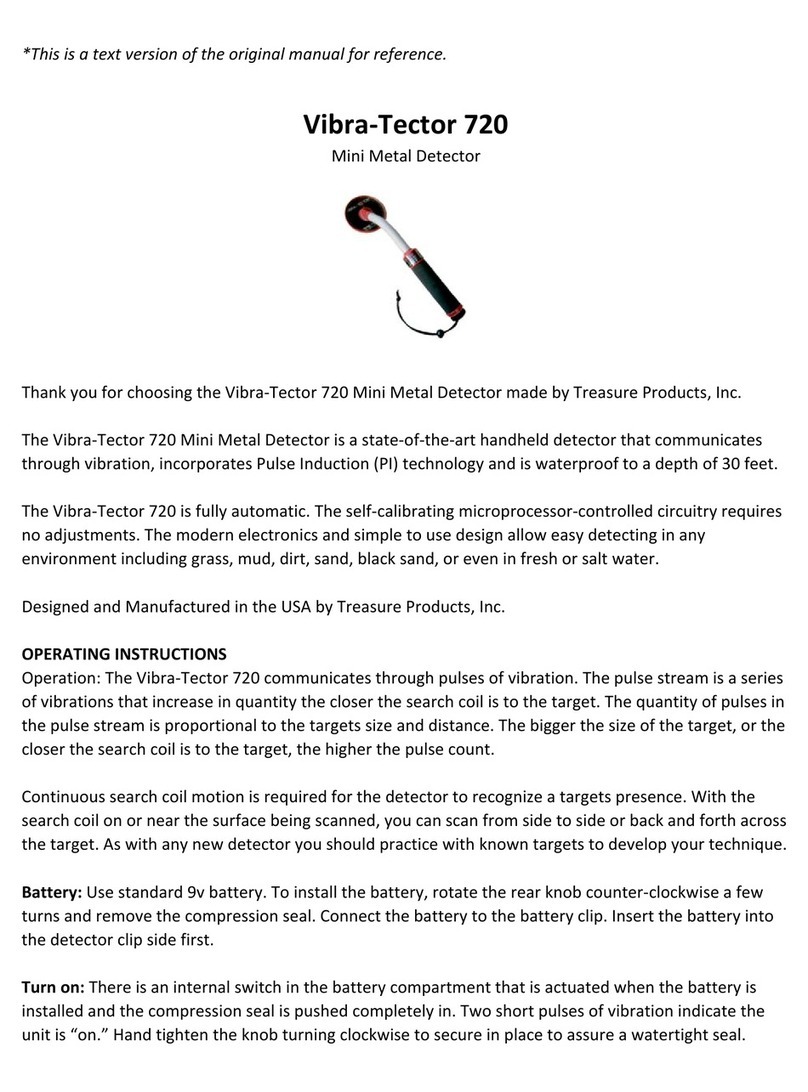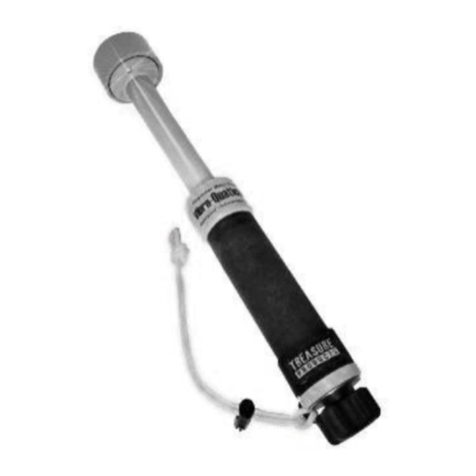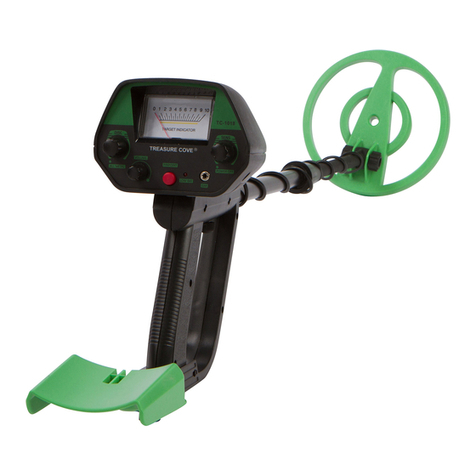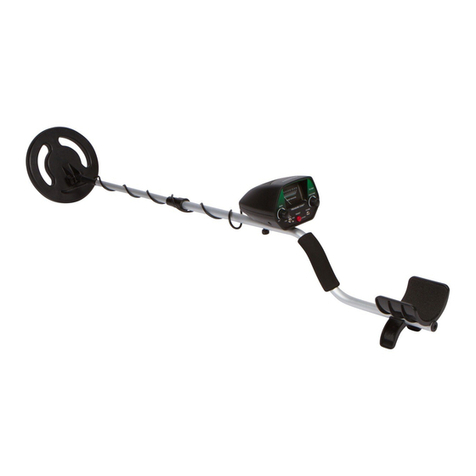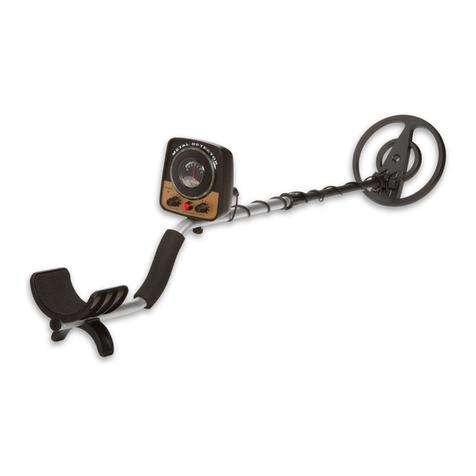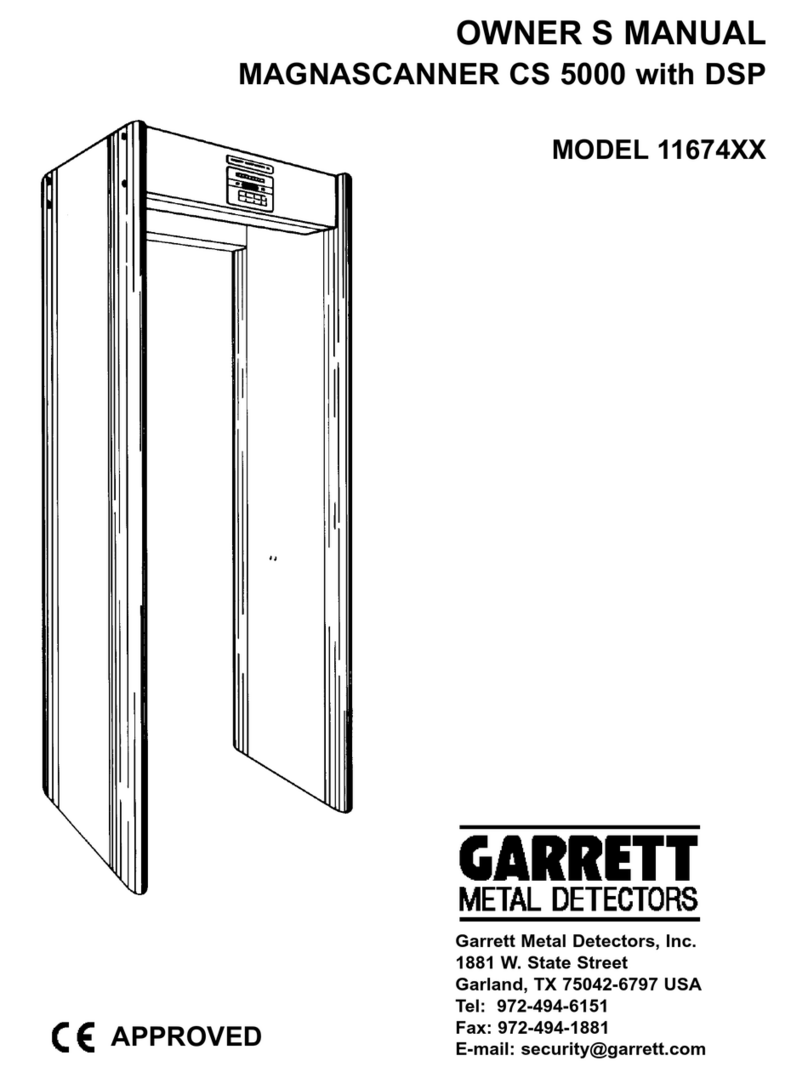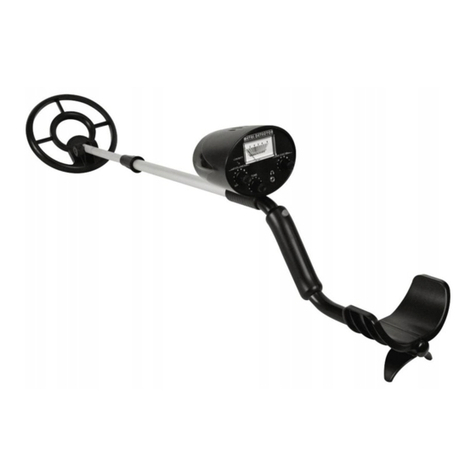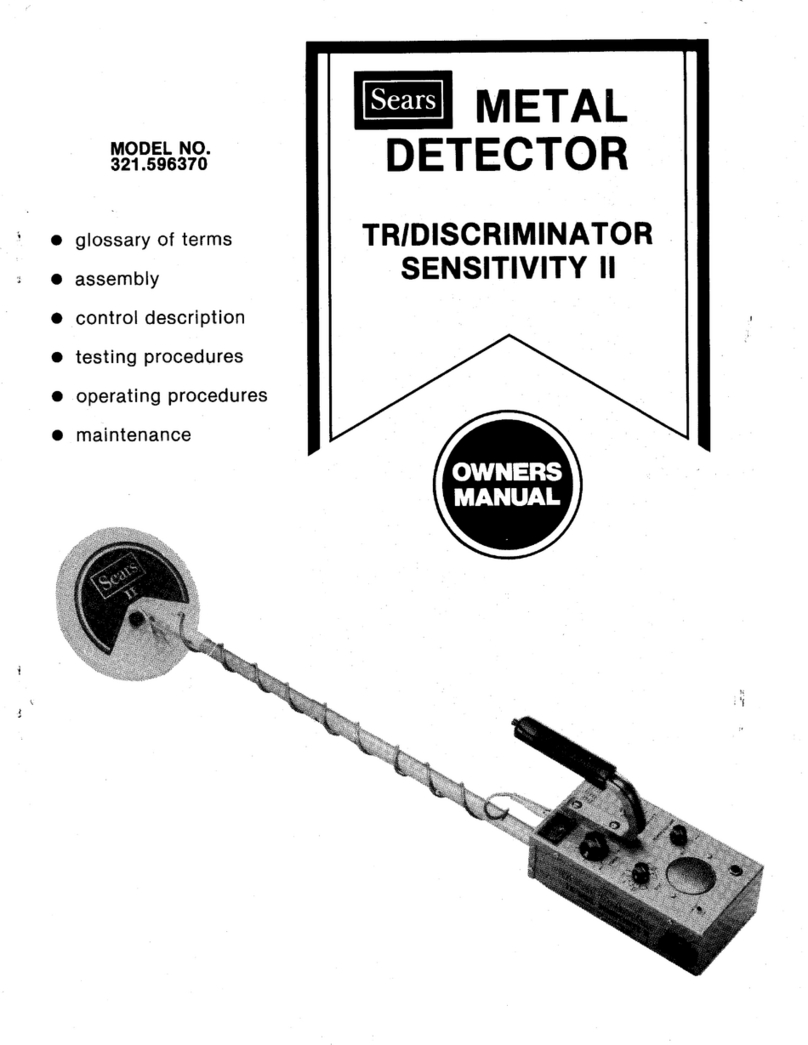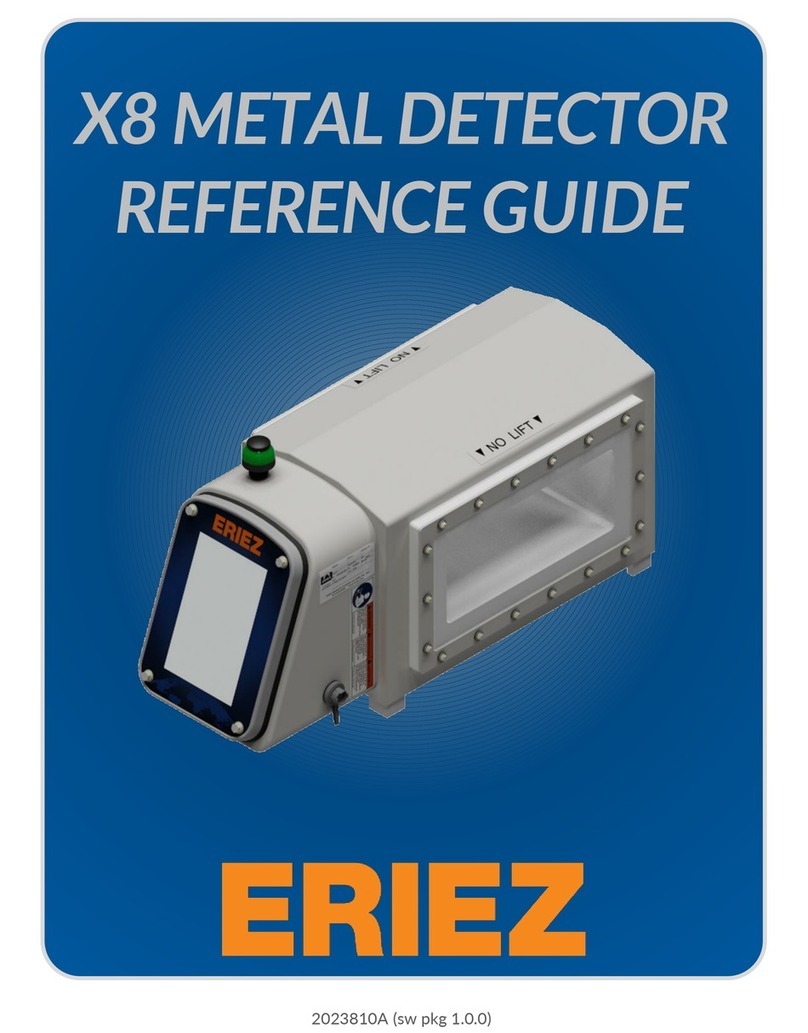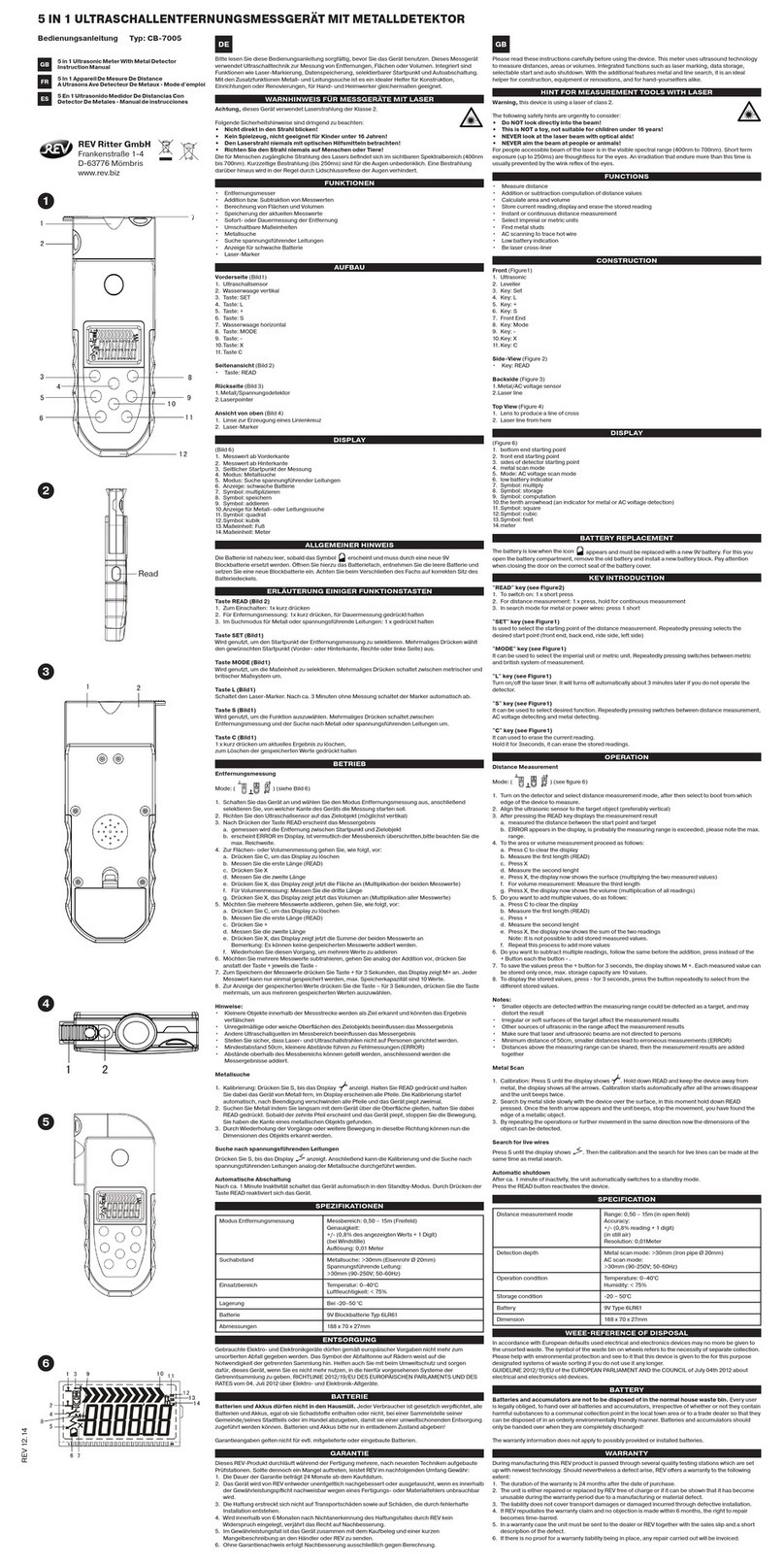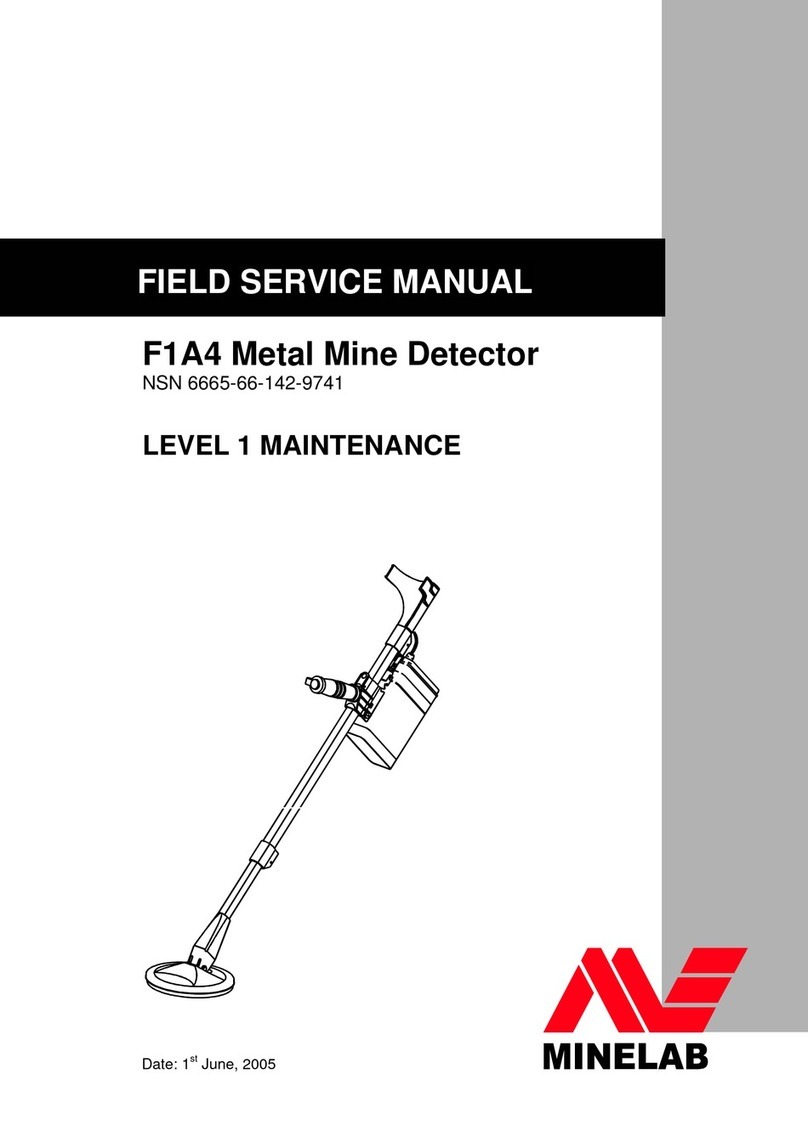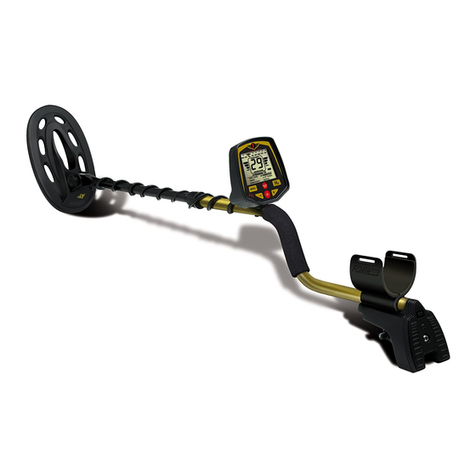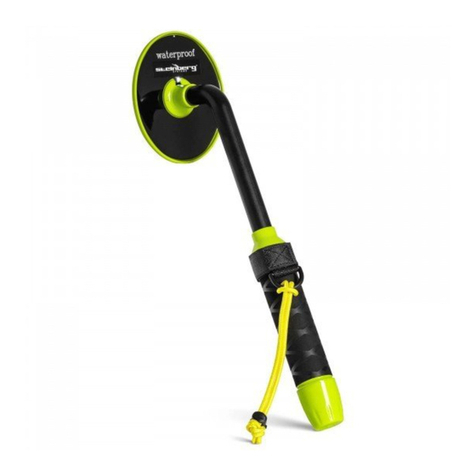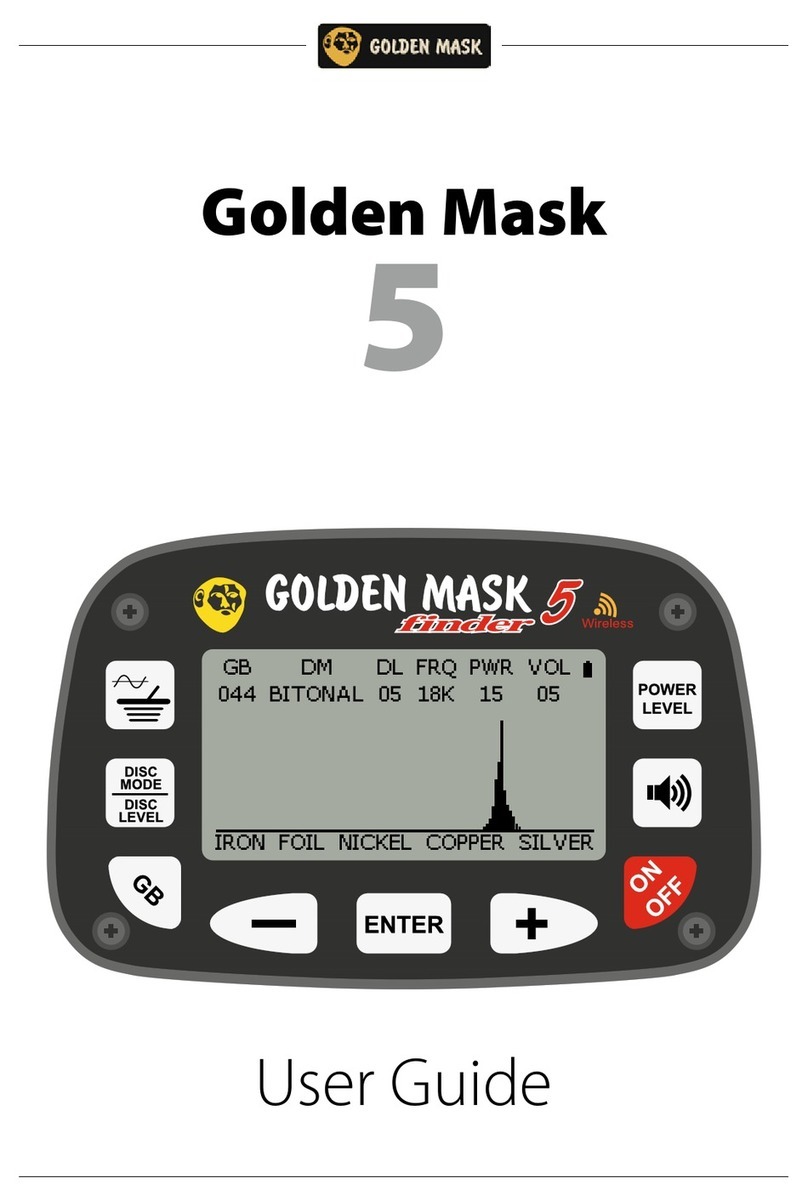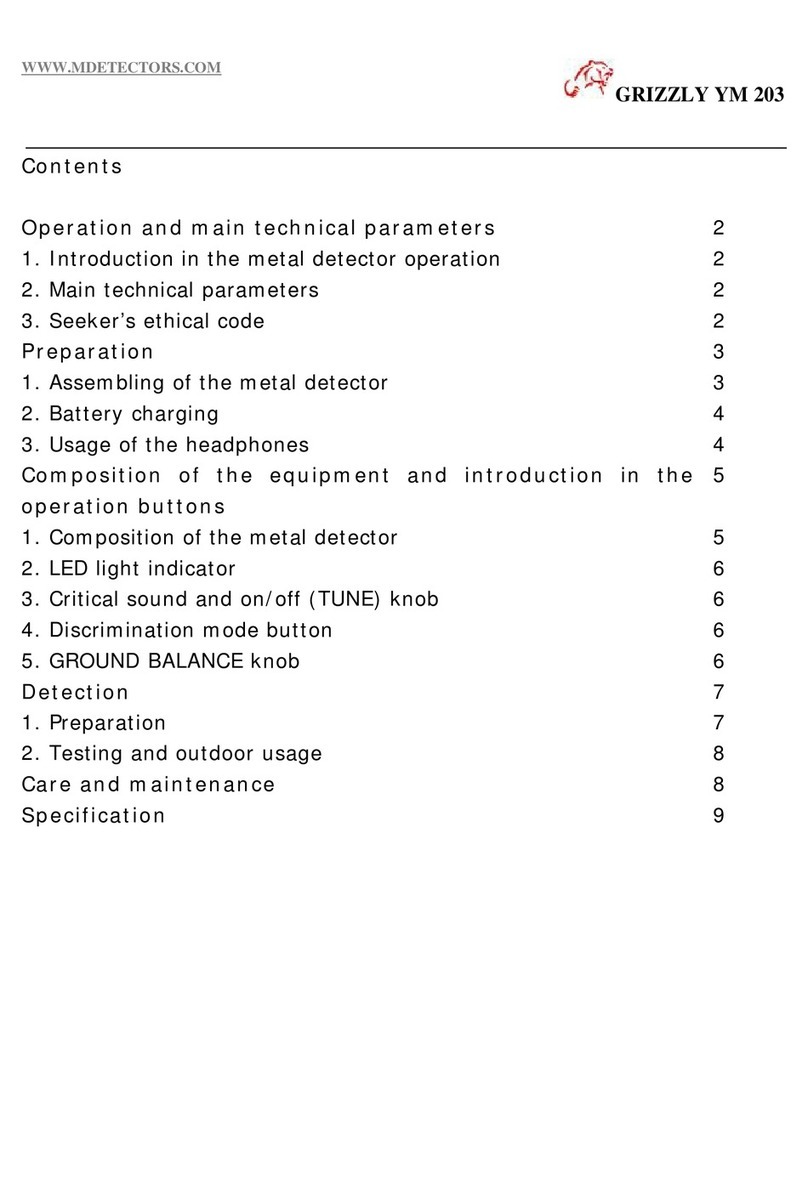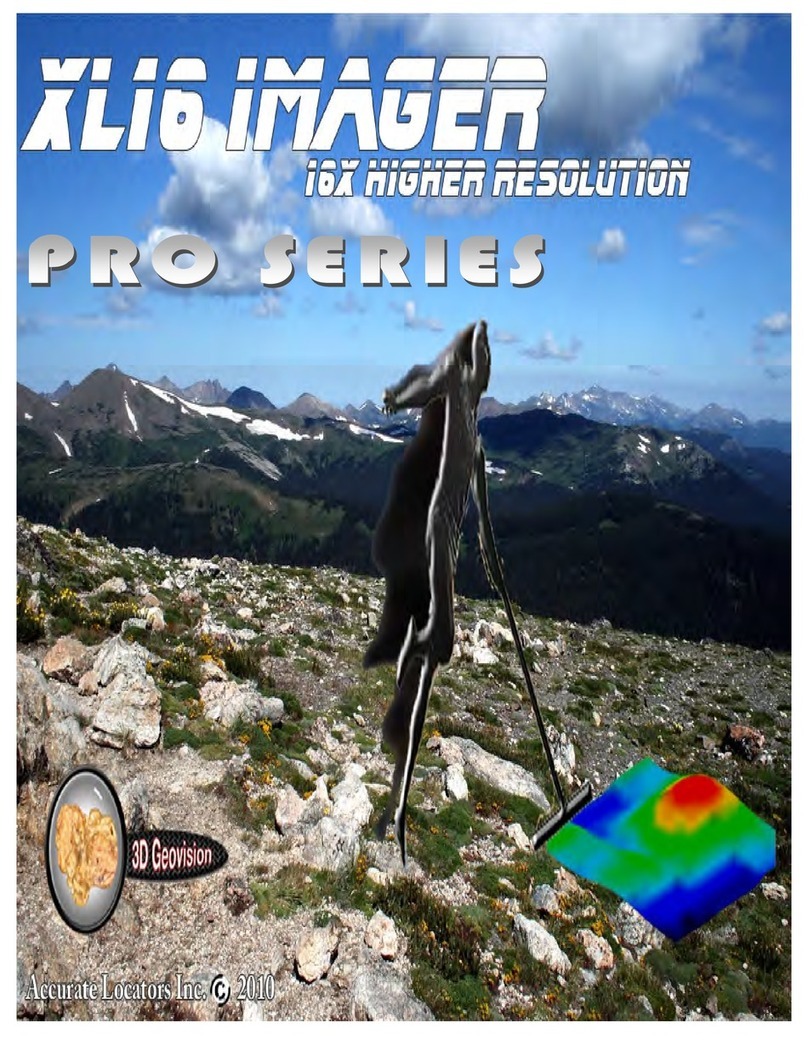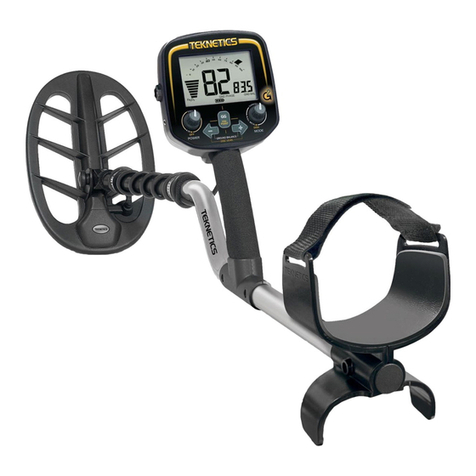
9
Operation
FINE-TUNING THE
DETECTOR
After you become familiar with how your de-
tector works, you can fine-tune it to make it
less sensitive to interference and more se-
lective in what it finds.
Adjusting Sensitivity
To adjust the search coil’s ability to detect
objects at different depths in the soil, rotate
SENSITIVITY between MIN and MAX. For
maximum detection depth, leave SENSITIVI-
TY set as high as possible. If the detector
makes a “chattering” noise, decrease SENSI-
TIVITY until the chatter stops.
Adjusting Ground
Setting GROUND takes a little time, but is crit-
ical for accurate operation. GROUND tunes
out false signals from mineralized soil. Fol-
low these steps to set GROUND.
1. Set MODE to VLF and lower the search
coil to 1/2to 2 inches above the ground.
2. If the pointer swings to the right (Non-
ferrous), turn GROUND to NORMAL. If
the pointer swings to left (Ferrous), turn
GROUND to BASALT.
3. Raise the search coil about 1 foot from
the ground and press the red button on
the handle. The pointer returns to the
center.
4. Repeat Steps 1–3 until the pointer stays
close to the center each time you lower
the search coil to the ground.
After you set GROUND, the detector is set for
the soil type at that particular site. Do not re-
set it until you use the detector at a different
site.
Adjusting Discrimination
Discrimination is the detector’s ability to dif-
ferentiate between types of metal. The de-
tector’s DISCRIMINATION setting determines
whether the detector will distinguish between
different types of ferrous and non-ferrous
metals.
If
MODE is set to TR2, start with DISCRIMINA-
TION set to mid-range. While you use the de-
tector, adjust DISCRIMINATION to the best
position. As you set DISCRIMINATION higher,
the detector becomes more sensitive to the
differences between large aluminum and
gold pieces, for example, but some small
valuable pieces, such as coins and small
rings, might be overlooked.
As you set DISCRIMINATION to higher levels,
the detector first does not detect small piec-
es of silver paper, then thick foil, and finally
metal objects like pull tabs from aluminum
cans.
Note: Each time you use the detector in a
different area, you must readjust DISCRIMI-
NATION. Each search location presents new
challenges.
FALSE SIGNALS
Because your detector is extremely sensi-
tive, trash-induced signals and other sources
of interference might cause signals that
seem confusing. The key to handling these
types of signals is to dig for only those tar-
gets that emit a strong, repeatable signal. As
you sweep the search coil back and forth
over the ground, learn to recognize the differ-
ence between signals that occur at random
and signals are stable and repeatable.
To reduce false signals when searching ar-
eas containing large amounts of trash, scan
only a small area at a time using slow, short
overlapping sweeps.


